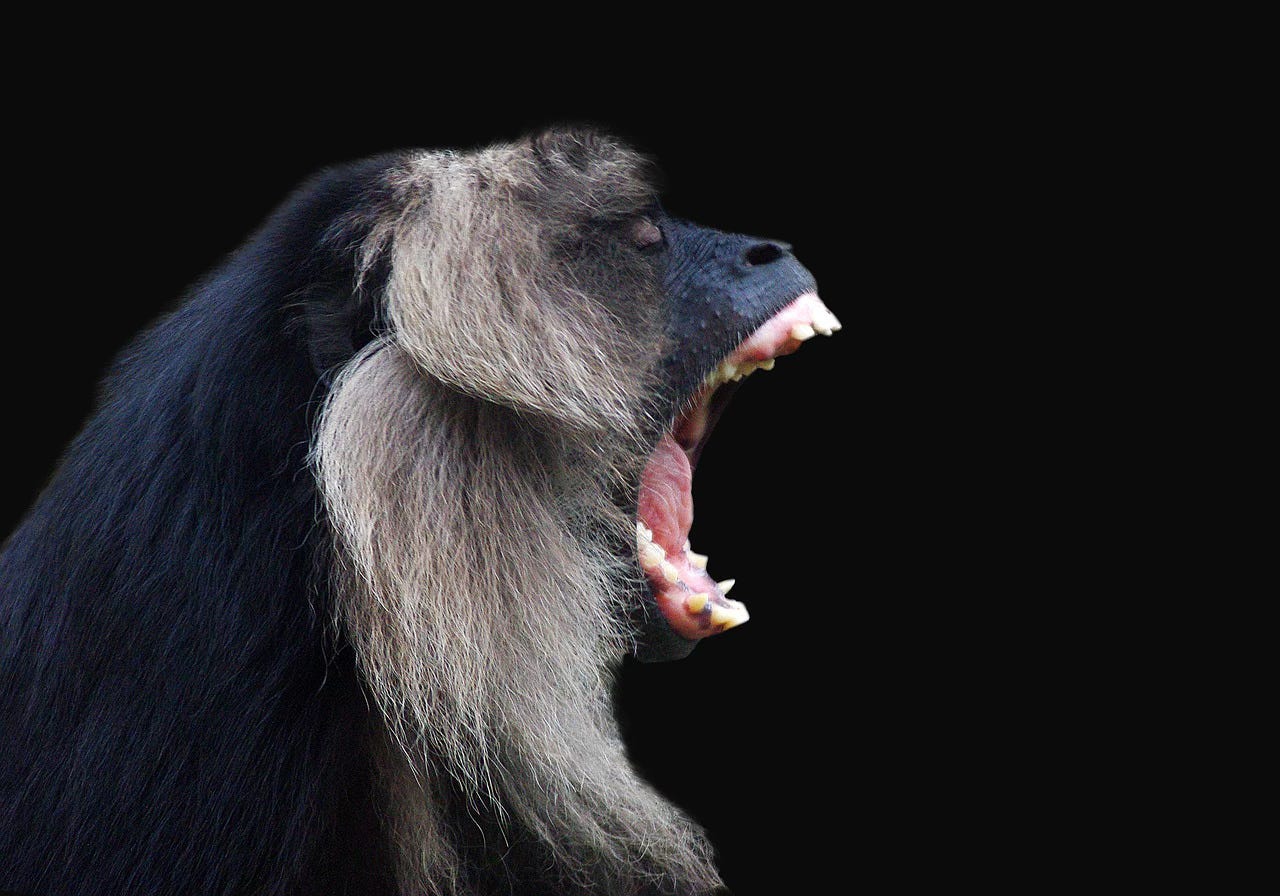Waking to Howler Monkeys
Except for the wild animal sounds, I always felt safe in Washington, D.C.
On Sunday mornings I used to wake to the sound of howler monkeys in Adams Morgan.
My dad and stepmom lived on Adam’s Mill Road in a neighborhood of Washington D.C. that adjoined The National Zoo. Some people living close to the Zoo heard the lions – the stomach-shaking roar that shocked and frightened our mute ancestors on the savannah – but we lived close to the monkey house, so we heard the howler monkeys.
The howler monkey, one of the largest New World primates, is distinguished not only by its prehensile tail and thick, shaggy coat, seemingly too warm for the DC summers, but also by the unmistakable sound that gives the howler its name. Native to the forests of Central and South America, howler monkeys spend their days high up in the canopy, where their resonant calls can travel for miles at dawn and dusk, serving as both territorial warnings and social communication. Even though the Zoo moved these majestic beasts into DC, I still felt like I was in their territory, rather than the other way around. I would not find my voice until many years thereafter.
As I learned when I visited the outside of their enclosures when we would walk over after breakfast, the howler monkey’s enlarged hyoid bone somewhat resembled ours, but in monkeys this oversized, horseshoe-shaped bone acts as a natural amplifier, producing a guttural roar that is among the loudest sounds made by any land animal. Their howls can reach around 110 decibels (at close range), comparable to a jackhammer or a rock concert.
Despite their fearsome voices, howler monkeys don’t bother with others and didn’t deserve to be uprooted thus. They spend much of their time quietly feeding on leaves, fruit, and flowers, moving deliberately through the treetops in cohesive social groups – families of tropical treetop grazers. To my sleepy ears on a Sunday morning, unmitigated by the typical DC car traffic, the howlers embody a striking paradox: They are creatures whose daily life is slow and almost meditative, like we all wish we could be, yet they announce their presence with extraordinary, almost primeval intensity.
Six times a month I also get to interrupt the calm of others to announce that I have something to say. The cowbell and the PA system secretly show my appreciation, my imitation, and my emulation of the howler monkeys of D.C.’s National Zoo. Long may they sound their alarms.
Happy late-August to you! One thinks of Wallace Stevens who said, “The summer night is like a perfection of thought.”
For Pub Quiz fun, please subscribe via Patreon at https://www.patreon.com/c/yourquizmaster.
I want to recognize those who visit my Substack the most often, including Luna, Jean, Ron, Myrna, and Maria, to whom I send sustained compassion. My new paid Substack Subscriber is Anne Da Vigo. Check out her mysteries!
Best,
Dr. Andy
P.S. Here are three questions from last week’s Pub Quiz:
Retail in South Davis. Starting with the letter S, what seller of outdoor apparel and camping gear is now found in the old Office Max location?
Daylight Saving Time. Does a majority or a minority of the world’s population observe Daylight Saving Time?
Pop Culture – Music. Only one singer has his name on two top ten hits in America this week. His first name is Morgan. What is his last name?
P.P.S. What should I arrange for Kate to celebrate our 33rd wedding anniversary?


Oh I love this. Such a snapshot. Such a poet in his narrative persona. Also, I'm a monkey girl. Aside from cats, they've always been my fave. I've got all the Curious George's. I'm watching this Nat Geo doc on Viet Nam on Hulu. It's one of those from a collection of nature stuff they have on there. They have these endangered primates that are protected, living in this reserve that is just amazing. Just asked AI: Northern White Cheeked Gibbon. Back to you, I love what you've done with the audio imagery. Just the name "Howler" evokes so much!